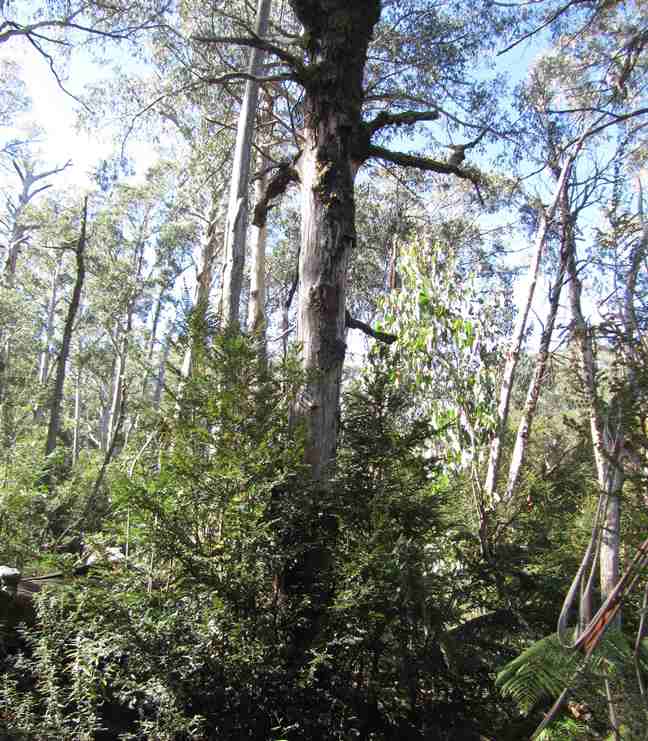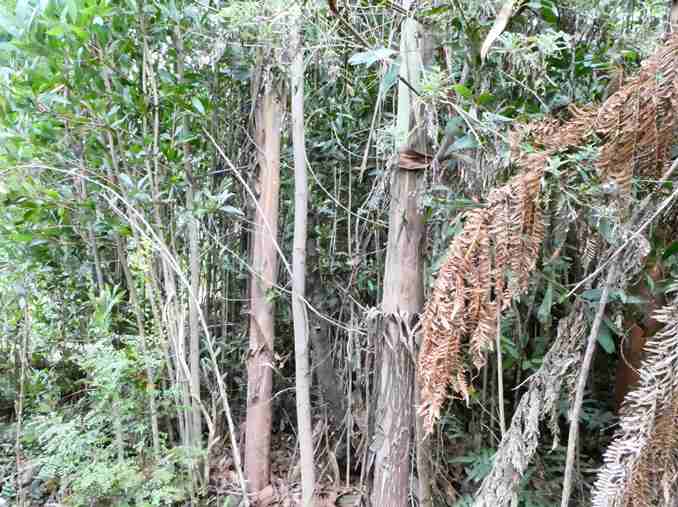Cool Temperate Rainforests are remnants of some of the oldest vegetation in Australia. They comprise a dense canopy of Myrtle Beech, a midstorey of trees such as Southern Sassafras and Blackwood Wattle, and an open understorey of tree ferns and ground ferns, forming a cool, shaded environment along the margins of streams. Despite their name, the most potent factor that determines rainforest distribution over a broad scale is absence of fire, but as our climate warms, it is expected that fire frequency and severity will increase. Cool Temperate Rainforest may not be adapted to this changing fire regime, with implications for its long-term persistence.
ARI recently completed a research project for Parks Victoria which aimed to determine how Cool Temperate Rainforest in the O’Shannassy Catchment, part of Melbourne’s water catchment area, had fared after the fires of 2009.
Ten years post-fire, the key findings were:
- At the highest fire severity, non-rainforest (i.e. eucalypt) canopy recruitment was so prolific that around two thirds of the rainforest mapped pre-fire could no longer be classified as such and has been lost.
- At low fire severity, there was little invasion of eucalypts into the rainforest stands.
- Understorey changes were mostly as expected, with burnt plots having a higher cover of forbs, grasses and shrubs than unburnt plots. Burnt plots had substantially lower tree cover, but similar fern cover and the rainforest species Myrtle Beech and Southern Sassafras were resprouting from the bases of top-killed parent trees.


Despite some documented resistance to fire, this study found that Cool Temperate Rainforest could not cope with the high fire severity of 2009 due to the encroachment of eucalypts. Remaining rainforest stands here and elsewhere in Victoria are further threatened by predicted increases in the frequency and intensity of fire due to climate change, and the long-term future of this vegetation type appears uncertain.
However, while this research has highlighted a concerning trend in rainforest distribution, it has also provided impetus and guidance for management action to protect the remaining stands of rainforest.
This project was funded by Parks Victoria
For more information contact: judy.downe@delwp.vic.gov.au
The following report provides more detail on this study:
- Tolsma, A., Hale, R., Sutter, G. and Kohout, M. (2019) Post-fire dynamics of Cool Temperate Rainforest in the O’Shannassy Catchment (PDF, 6.1 MB). Arthur Rylah Institute for Environmental Research Technical Report Series No. 298. Department of Environment, Land, Water and Planning, Heidelberg, Victoria
(accessible version (DOCX, 2.3 MB))
Page last updated: 10/11/22